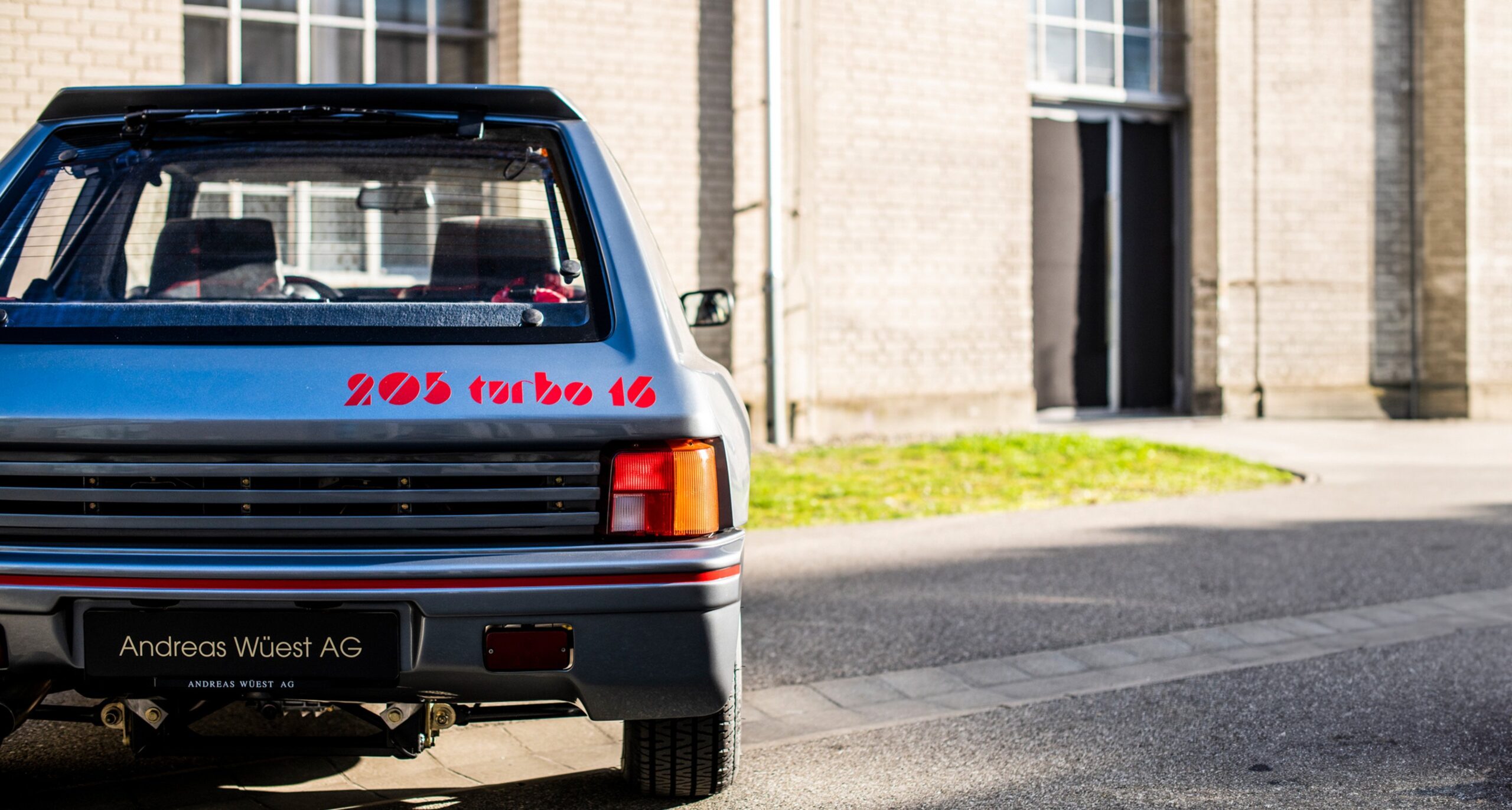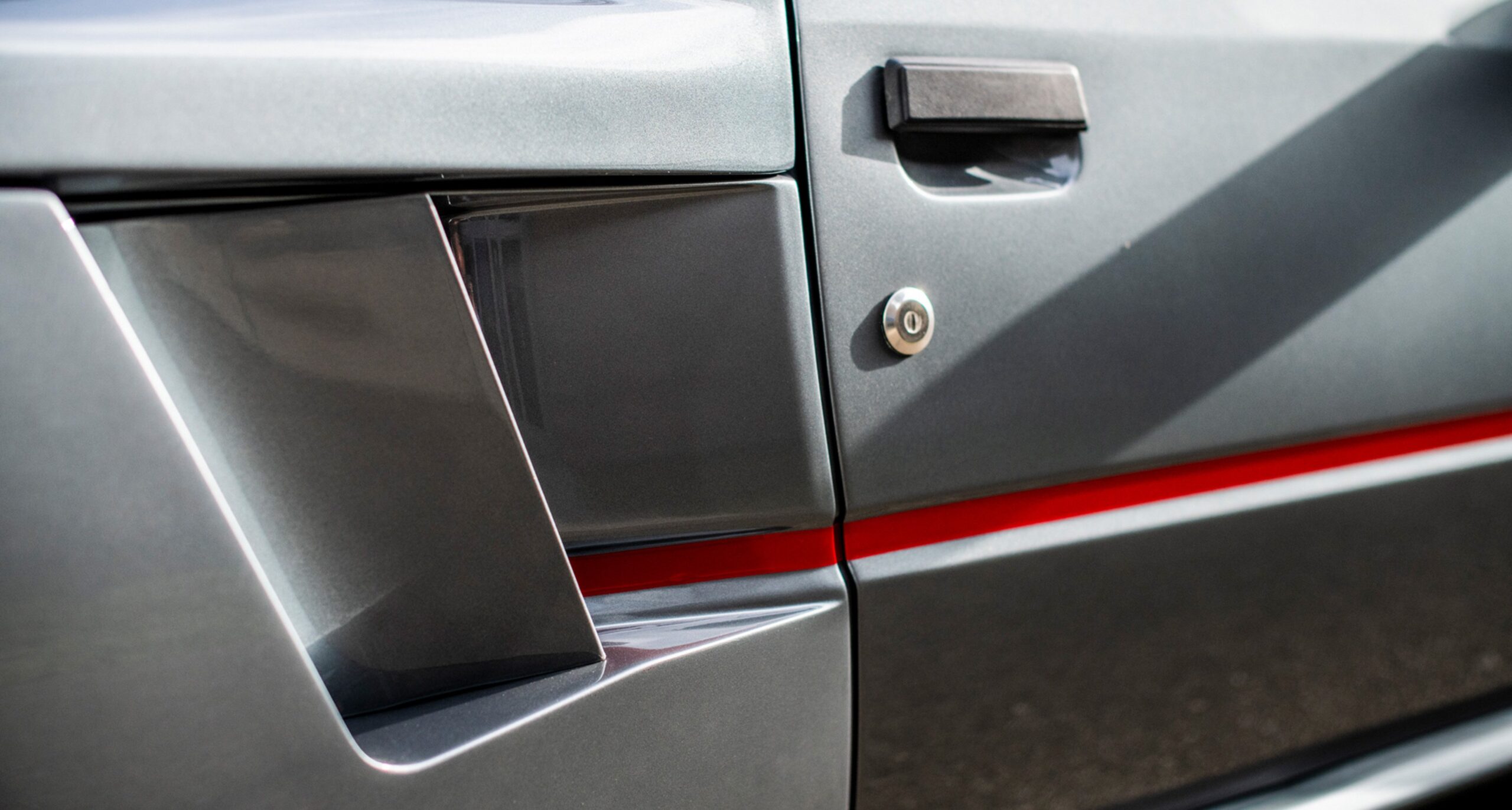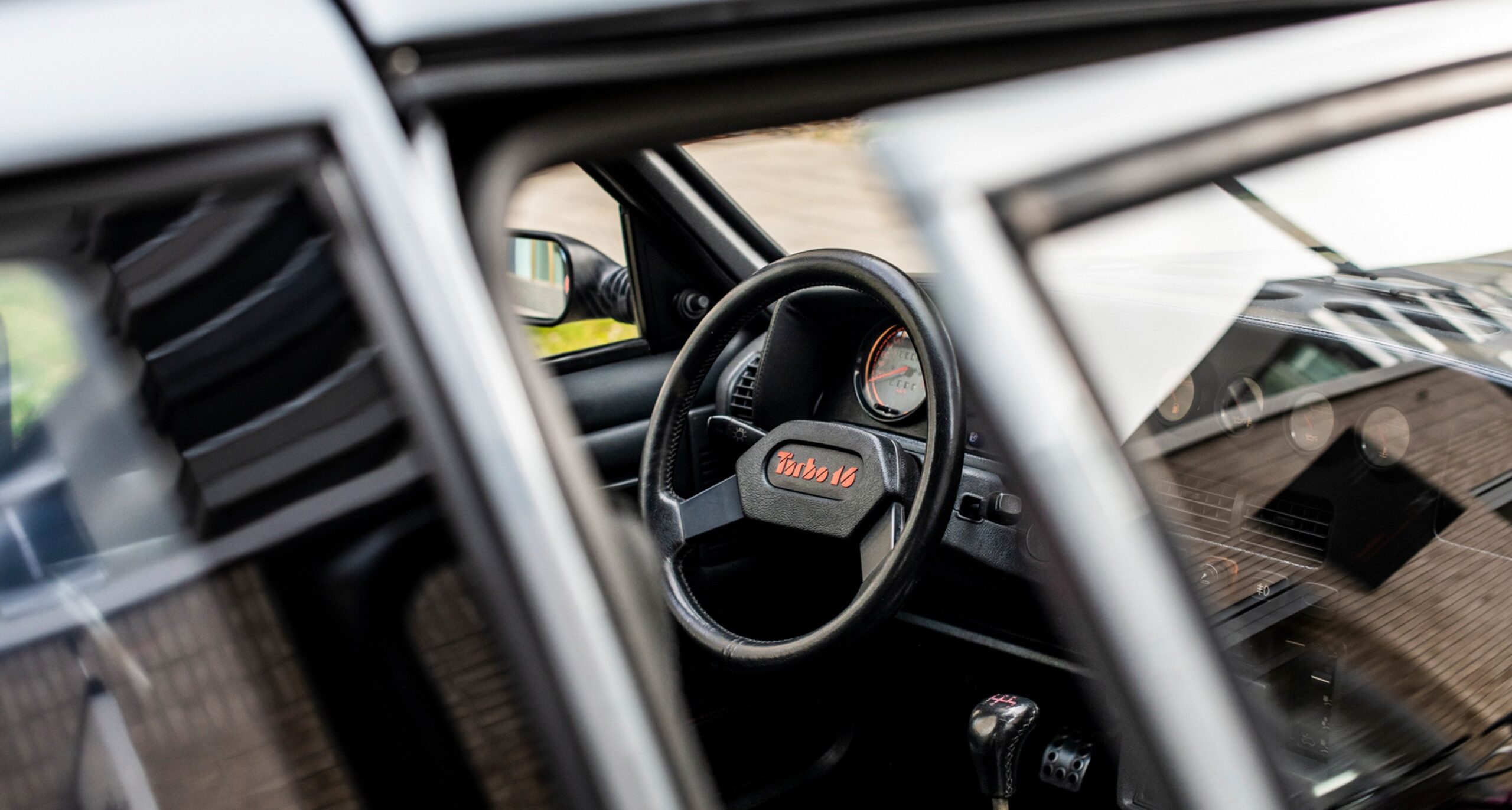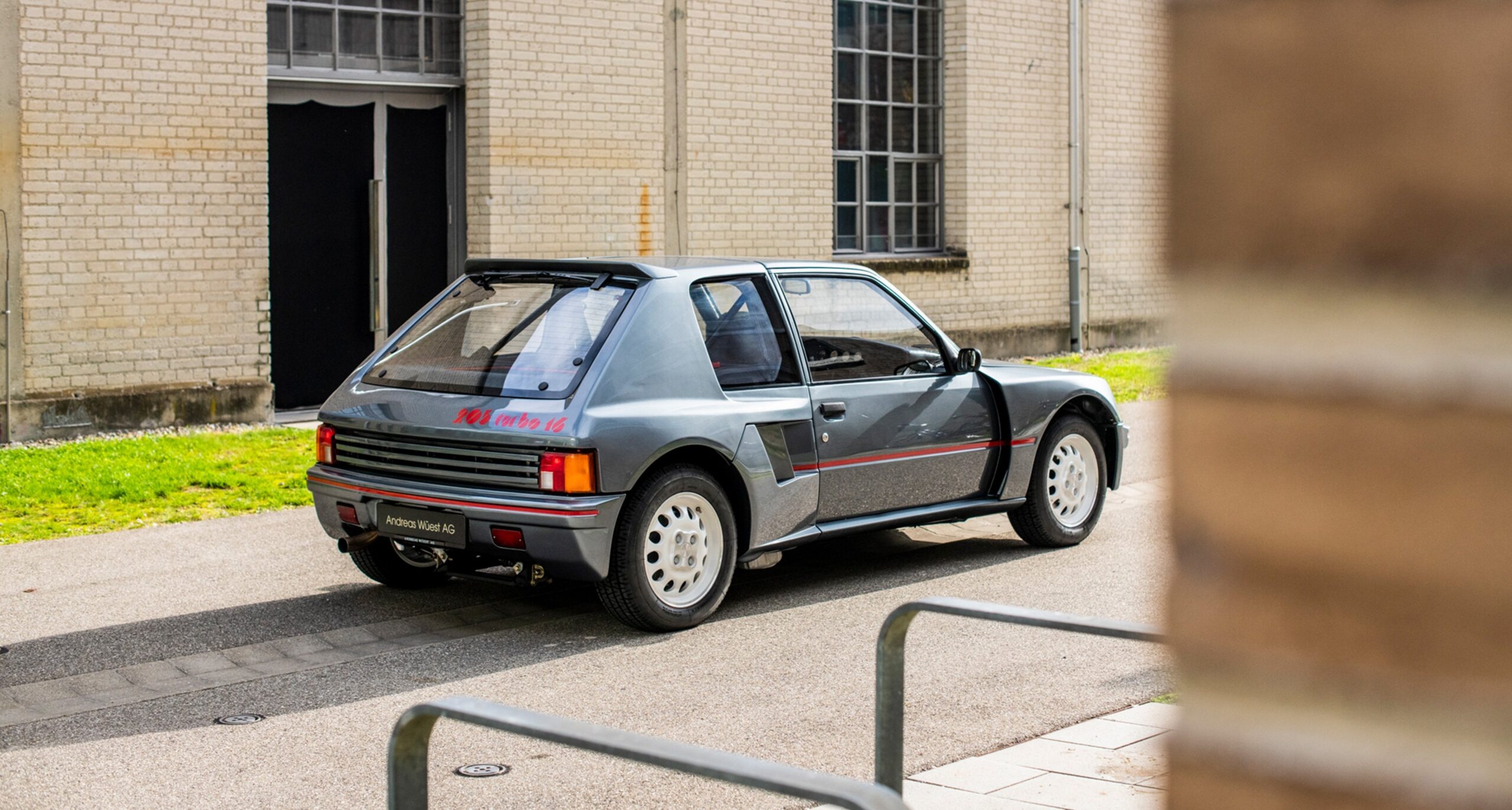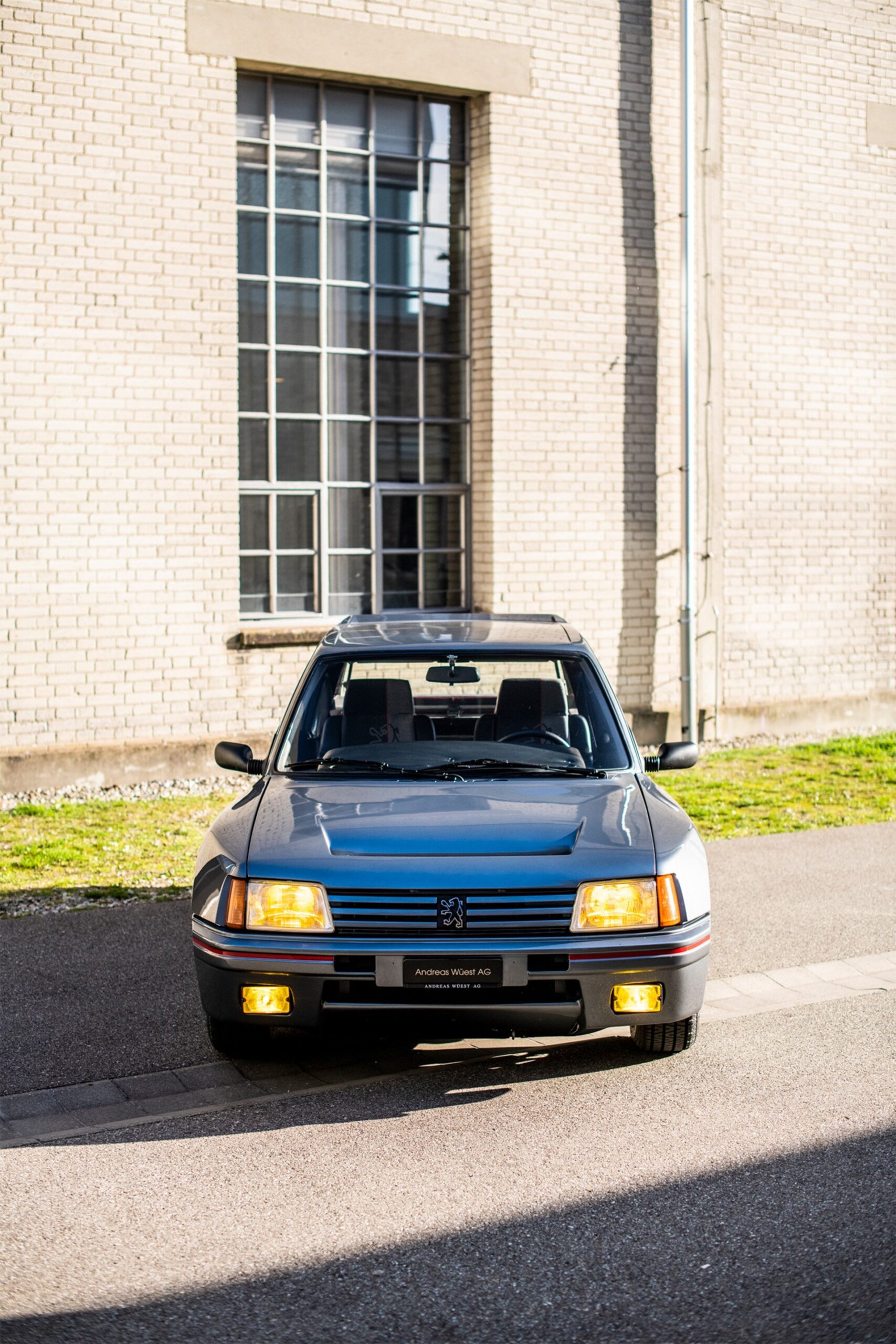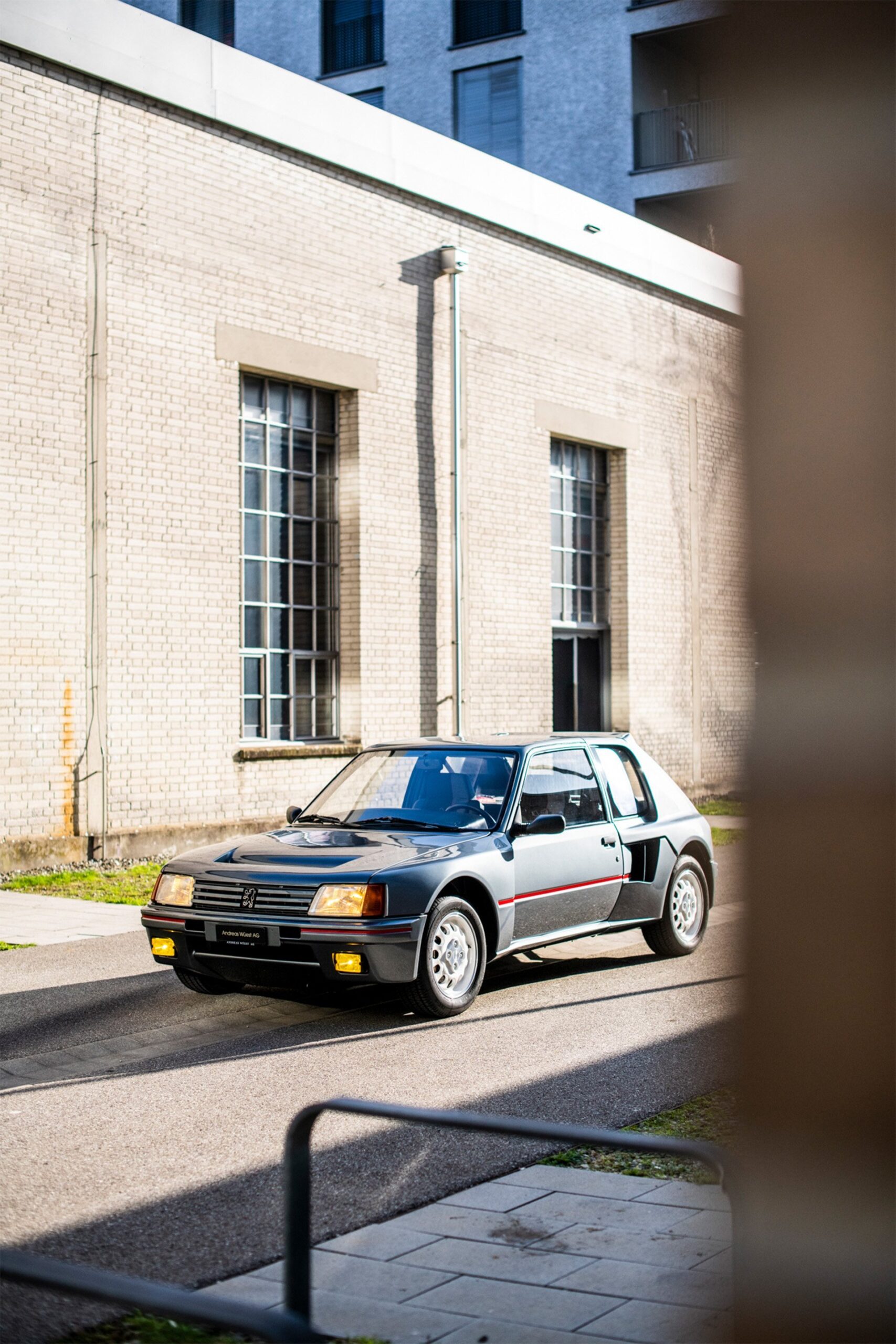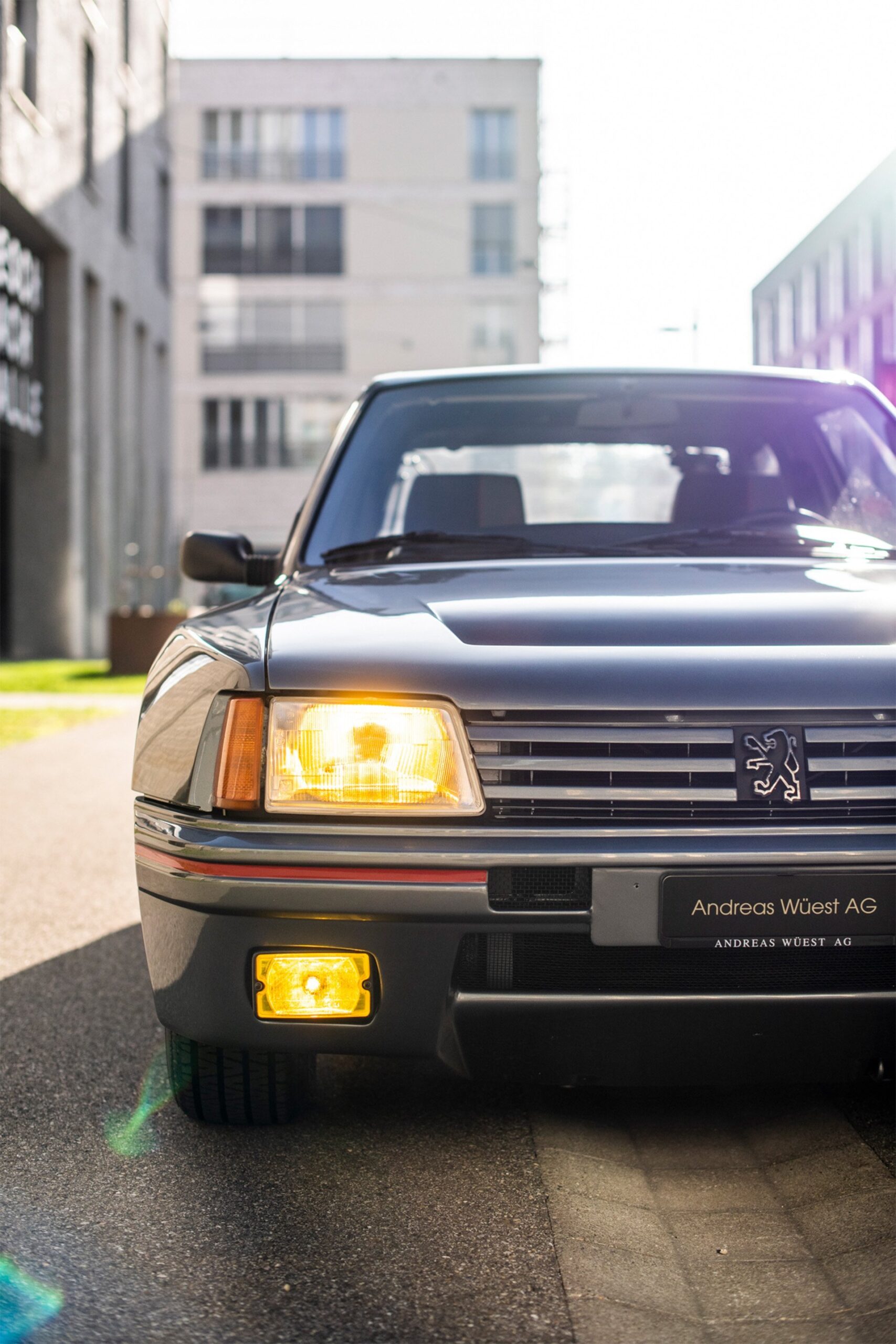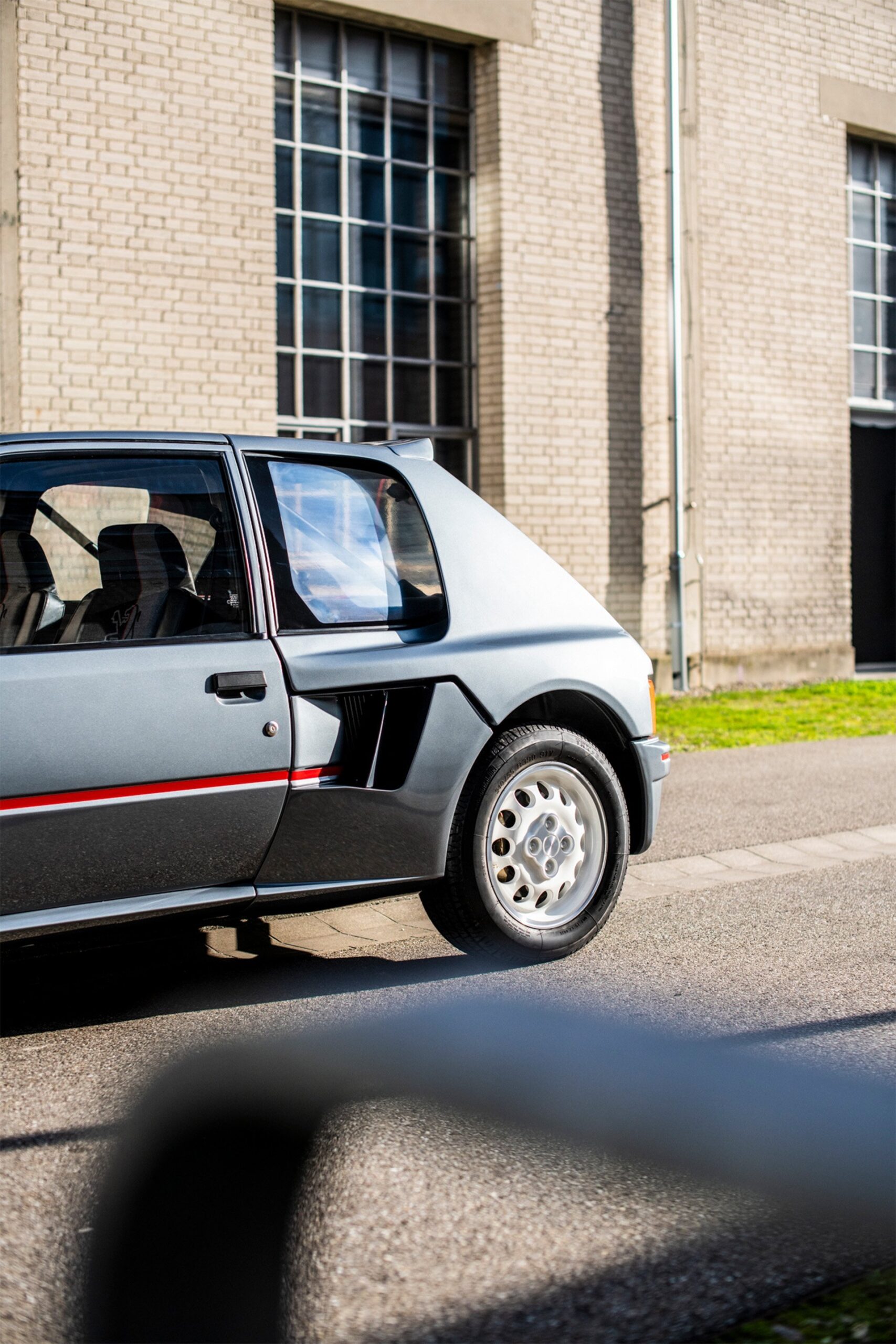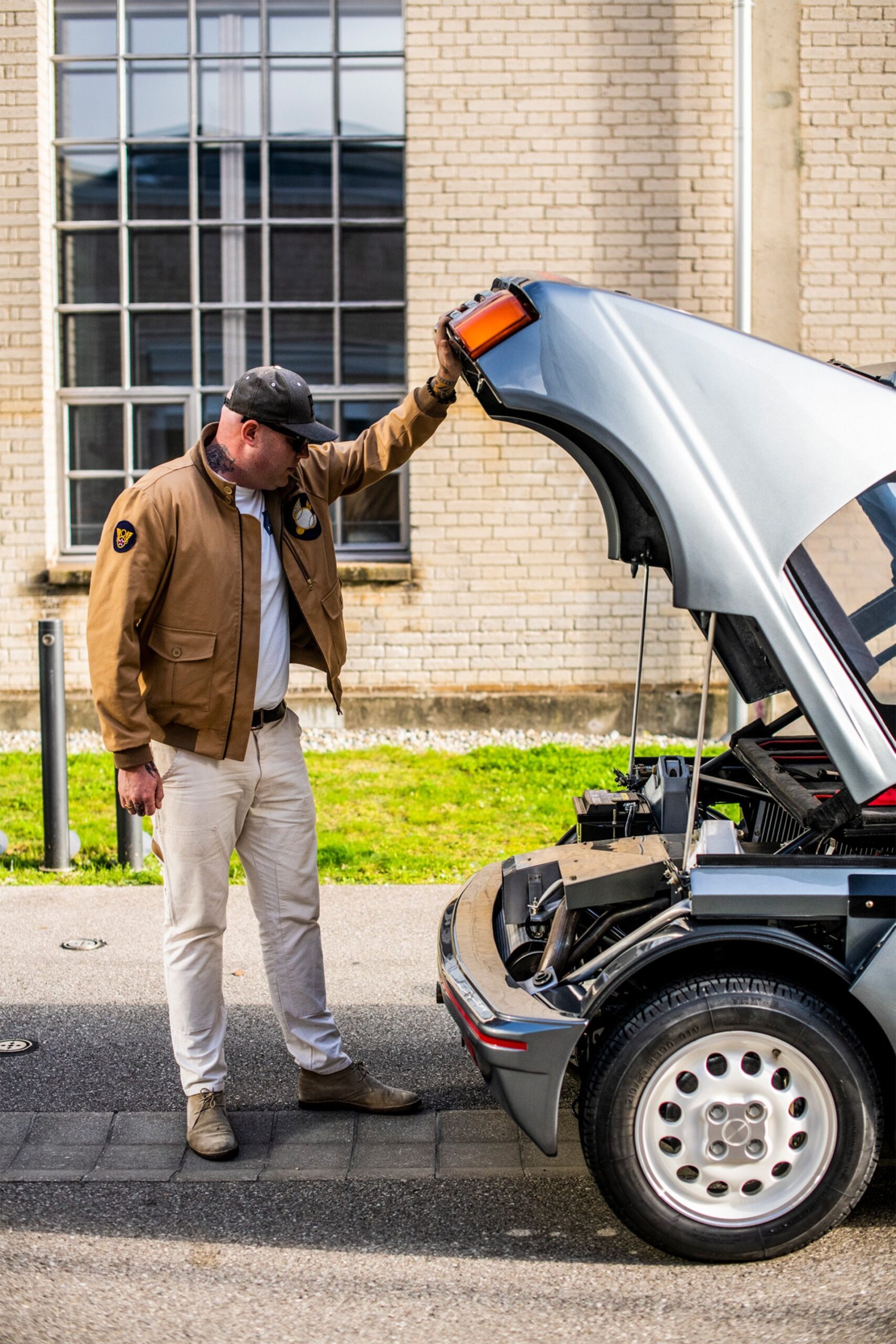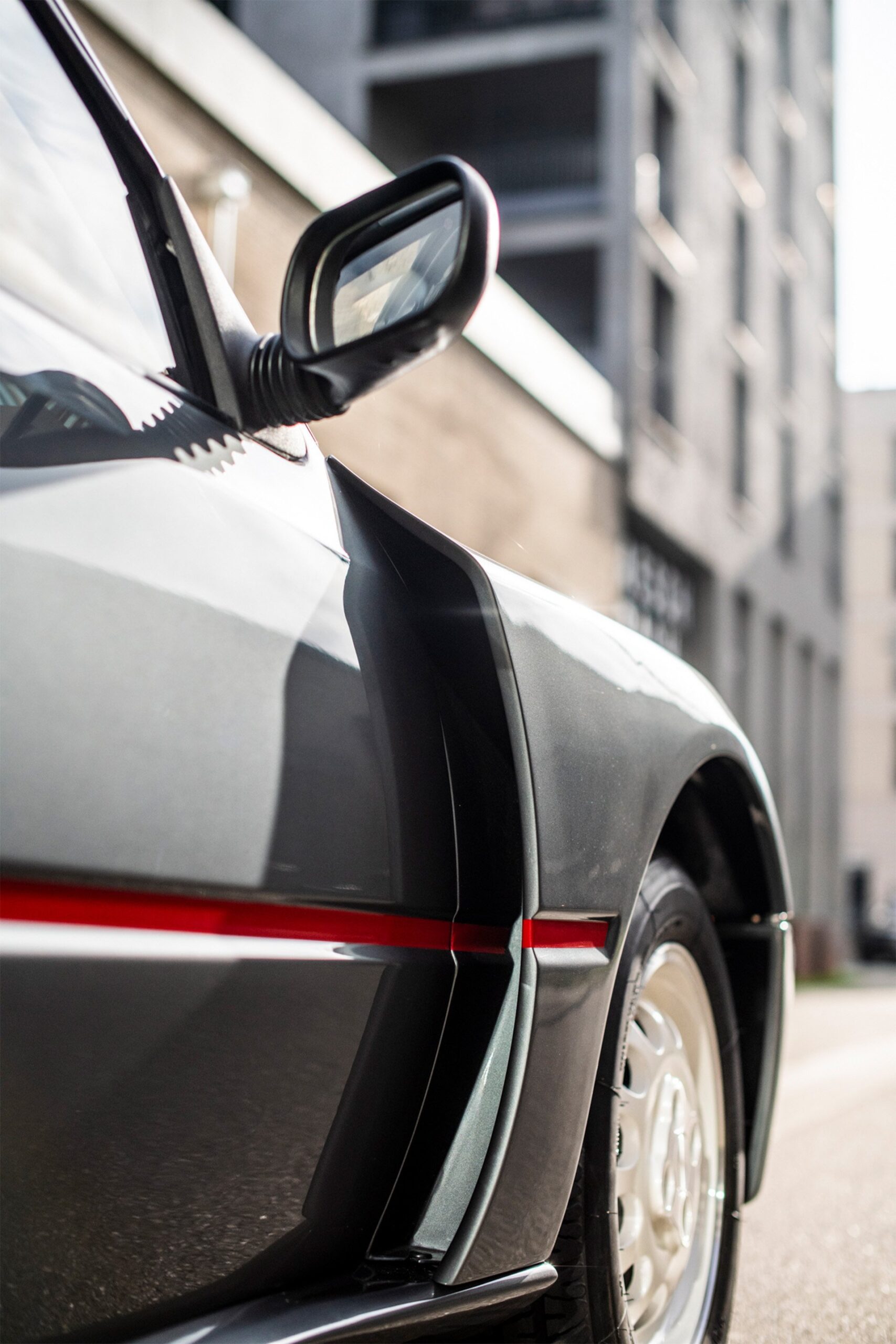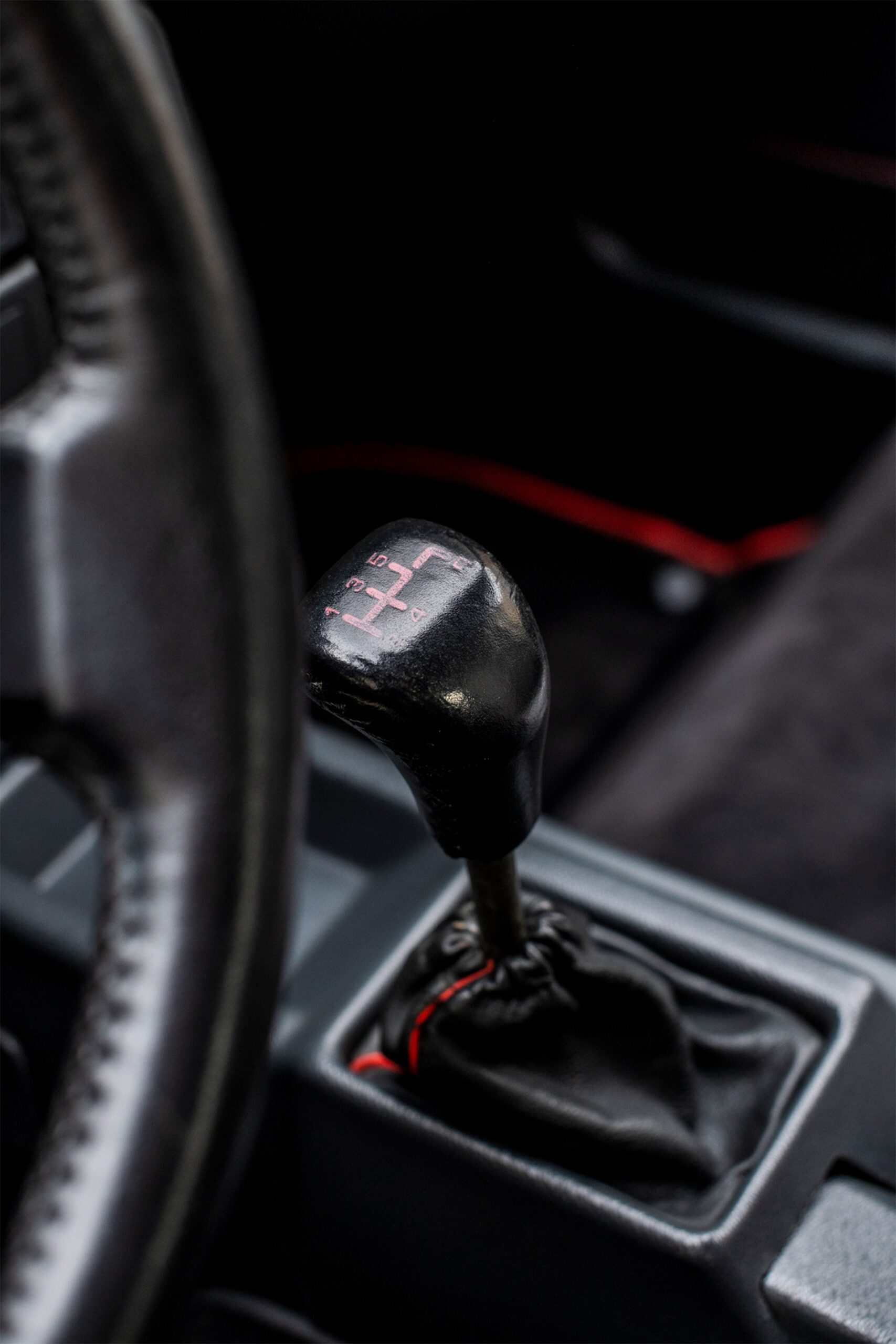When building the 205 Turbo 16, Peugeot had Group B’s rally stages, not the weekly grocery shop, in mind. However, that didn’t stop the previous owner of this immaculately restored example for sale with Andreas Wüest from trying…
If you’ve loved cars for as long as you can remember, we’ll bet your young self tried to persuade a parent to buy at least one that was completely inappropriate for their needs. In my case, that involved encouraging my mother to part-exchange her fun but practical Triumph Vitesse rag top for a crimson-coloured De Tomaso Pantera…
There’s a similar story attached to the jaw-droppingly perfect Peugeot 205 Turbo 16 that Swiss dealer Andreas Wüest has on offer following a meticulous (and we do mean ‘meticulous’) six-year restoration.
This wild relic of the thrilling Group B rally era previously belonged to the mother of one of Wüest’s close friends who reluctantly had to accept that a raucous, mid-engined homologation special with a clamshell back-end, no rear seats and a trunk filled with a spare wheel really wasn’t the ideal shopping vehicle. The car – one of 200 built in 1984 to qualify the even more extreme ‘Evolution 1’ race version for the World Rally Championship – was subsequently relegated to a corner of the family garage until Wüest rescued it way back in October, 2018.
He immediately took it to the workshops of highly regarded classic car restorer Cedric Thomas in Hellikon, northern Switzerland, where it was stripped to its bare bones before being lovingly re-assembled using many of the last available new, old stock components on the planet. And, as our photos show, every part of the car is now as fresh – or possibly fresher – than when it rolled off the line exactly 40 years ago.
Peugeot’s ‘regular’ 205 GTi models in both 1.6 and 1.9 litre guise are now well and truly established as modern classics, but the Turbo 16 belongs in another league altogether. In fact, despite Peugeot’s strategy to boost sales of the standard cars by ensuring the Turbo 16 maintained an obvious family resemblance, barely a single component from the former was carried-over to the latter, with only the windscreen, doors and headlamps being interchangeable.
While the Evolution 1 T16s were developed and built on the outskirts of Paris at Peugeot Talbot Sport’s Bois de Boulogne HQ, the homologation cars were hand-assembled 30km away at the former Simca plant in Poissy.
There, the all-important ‘silhouette’ of the road-going 206 was treated to a steel monocoque at the front (which included the car’s cabin) married to a tubular spaceframe at the rear. From that hung the transversely-mounted five-speed gearbox and four cylinder, 1775cc, twin-cam, 16 valve turbocharged motor, which were offset to the right hand side to give the propshaft a direct run between the front and rear ZF limited-slip differentials that formed part of the Ferguson Formula four-wheel-drive set-up.
Twin fuel tanks were mounted inside the car beneath the seats, a bespoke dashboard carried a turbo boost gauge between the speedo and rev counter and — just so the driver never forgot what he or she was piloting — the steering wheel was emblazoned with ‘Turbo 16’ in decidedly of-the-era script.
The whole lot was then wrapped in bulging bodywork that enveloped the car’s widened track, with the rear side windows, wings and air scoops being combined into the single clamshell that hinged upwards to allow largely unhindered access to the powertrain. Engine cooling was, meanwhile, enhanced by the generous gaps aft of the front wings that allowed air to rush along the side of the car before being drawn into the clamshell’s scoops and ‘gills’.
While some manufacturers gained a reputation for treating the homologation rules with a certain degree of contempt by not always completing the requisite number of road cars, Peugeot went to the other extreme with the Turbo 16 by dutifully building all 200 in one batch.
When FIA inspection day came around in March 1984, every single one was lined-up to prove to the officials that they really did exist, and the 205 Turbo 16 was duly ‘signed off’ on April 1 – little more than a month before the (already built) Evolution 1 cars made their WRC debut in Corsica.
With every homologation car being finished in the same shade of grey and with left-hand steering, the appeal of the Turbo 16 was initially lost on many buyers – especially since it carried a price tag of around 290,000 French francs, which was about the same as a Ferrari 308. Now, of course, their rarity and historic significance has been recognised, sending values soaring.
Early in its life, this particular example ended up in the hands of a Polish owner before finding its way to Switzerland where, following that painstaking six-year rebuild, it now presents as all but a brand new car.
So if you’ve ever wished the automotive clock could be turned back to those wild and crazy days of the early ‘80s, when the Turbo 16 and its Gallic stablemate, the Renault 5 Turbo 2, brought a taste of Group B to the streets, why not give Wüest a call and make it happen. It might even make a great Christmas gift for your mother…






